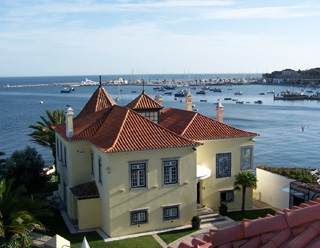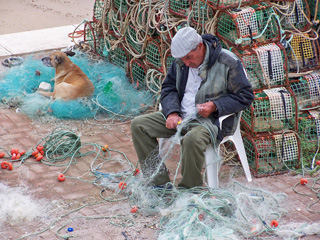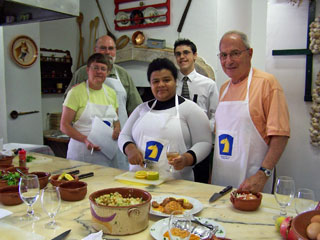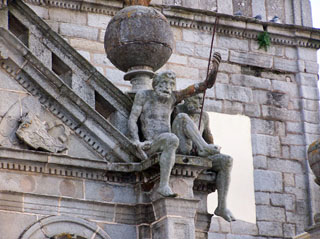

By
Don and Linda Freedman
Search
TheTravelzine
TheTravelzine Group
Access Your Mail
Don's
Gallery
Packing
Hints
Planning
Tips
Cities
Links
Links
LINKS TO OUR TRAVELOGUES
Argentina, Buenos Aires - Jan-Mar 2010
Argentina, Buenos Aires - Jan-Mar 2009
Argentina, Buenos Aires - Jan-Mar 2008
Austria - Fall 2005
Belgium, Brussels - Fall 2000
Canada - Summer 2002
Canada - Summer 2001
Canada - Summer 2000
Czech Republic - Spring 2000
France - Fall 2002
France, Paris - Fall 2000
France, Paris - Spring 1999
France, Lyon - Spring 1999
Germany, Berlin - Fall 2009
Germany - Fall 2002
Germany - Spring 2000
Germany - Fall 1999
Greece - Fall 2012
Greece - Fall 1999
Greece - Fall 1997
Hungary - Spring 2000
Israel - Fall 1999
Italy - Winter 2007
Italy - Winter 2006
Italy - Winter 2005
Italy - Winter 2004
Italy - Winter 2003
Italy - Winter 2001
Italy - Fall 1998
Italy - Fall 1996
Netherlands - Spring 2000
Portugal, Azores - 2019
Portugal, Azores - 2018
Portugal, Sao Miguel & Lisbon - 2017
Portugal, Azores - 2017
Portugal, Azores - 2016
Portugal, Azores - 2015
Portugal, Azores - 2014
Portugal, Azores - 2013
Portugal, Azores - 2012
Portugal, Azores - 2011
Portugal, Lisbon - 2011
Portugal - Fall 2006
Portugal - Fall 2004
Portugal - Fall 2003
Portugal - Fall 2001
Portugal - Spring 1999
Portugal - Spring 1997
Slovakia - Spring 2000
Slovenia - Spring 1999
Slovenia - Fall 1996
Spain, Barcelona - Winter 2006
Switzerland - Fall 2002
Switzerland - Spring 2000
Switzerland - Spring 1999
Switzerland - Fall 1998
Switzerland - Fall 1997
Switzerland - Spring 1996
U.S. Florida, Key West - Fall 2006
U.S. Florida - Spring 2001
U.S. Maine - Summer 2002
U.S. Massachusetts - Summer 2003
U.S. Massachusetts - Summer 2002
U.S. Massachusetts - Summer 2001
U.S. New York State - Fall 2005
U.S. New York State - Summer 2004
U.S. New York State - Summer 2003
U.S. New York State - Summer 2001
U.S. Washington,DC - Spring 2000
PORTUGAL
FALL 2006
Porto | Cascais | Portel | Lisboa
São Miguel, Azores
Our destination today was Cascais, by way of Lisboa. It was a three hour and ten minute train ride from Porto to the Santa Apolonia station near the shorefront in downtown Lisbon. We hopped on bus #28 just outside the station and it was a ten minute ride along the shore to the Cais do Sodré station where the commuter trains leave for Cascais. We bought the tickets at a machine and boarded a waiting train for the forty minute ride along the coast to Cascais, and headed to the nearby ice cream stand to treat ourselves to a Magnum Classic!
Cascais, which is an old fishing village only 30 km from the city, on the Portuguese Riviera, has evolved into an upscale “bedroom” community and beach resort. The serene beauty of the village streets, small sandy beaches and rocky shoreline is adored by residents and visitors alike.
Last visit, we discovered the Hotel Albatroz, which is a three minute walk from the train station. From the station, just cross Largo da Estacao toward the ocean and proceed down Rua Sebastiao Carvalho Melo to the end and you have arrived. Although the hotel complex is just across from the train station it is tucked away from any transit activity. We were happy to be back.
We were graciously greeted and shown to our room, similar to the one we had in 2004, just one floor above. It was a glorious sunny warm day so I immediately poured a glass of Port from the decanter and took it out onto our balcony, which overlooked the pool, rocky inlet and picture perfect coastline. I was a happy camper, breathing in the fresh salt air while sipping my Port!
 Linda sampled the
pastries beside the decanter while admiring our large
king bedded room done in soft blue and grey. Needless to
say, although she did, all the furnishings were top of
the line in design and quality. The report from the
bathroom, done in tones of beige, was that there was room
to roam and that I would appreciate the excellent
lighting and topnotch amenities. After her second pastry
she proclaimed the closet space was more than adequate to
accommodate the contents of our two carry-ons. ;-)
Linda sampled the
pastries beside the decanter while admiring our large
king bedded room done in soft blue and grey. Needless to
say, although she did, all the furnishings were top of
the line in design and quality. The report from the
bathroom, done in tones of beige, was that there was room
to roam and that I would appreciate the excellent
lighting and topnotch amenities. After her second pastry
she proclaimed the closet space was more than adequate to
accommodate the contents of our two carry-ons. ;-)
This exquisite property consists of the building we were in, which is an extension of the original “Main House”, the newly-acquired “White House”, the elegant "Palace" and the adorable "Yellow House", on the cliff beside the inlet.
After watching the sun go down, we opted for an early dinner at an old favorite, Flecha Azul on Avenida Valbom, 8b where we knew the fish was fresh, the service friendly and the cost reasonable. The sports banner decor had not changed, perhaps a few more now graced the walls. The sopa legumes, bolinhos and mountain cheese starters were as excellent as we remembered. Grilled sole and robalo with boiled potatoes and fresh green beans and a glass of house red finished off the simple, traditional meal.
After a good night’s sleep on
a very comfortable firm mattress, soft pillows and crisp
linens, we were ready to resume where we left off last
night. Breakfast at the Hotel Albatroz is spectacular.
The dining room offers a panoramic view of the adjoining
sandy beach, sparkling ocean and coastline east to
Estoril. The presentation of the generous buffet competes
nicely with the view for attention. Fine quality smoked
salmon with plump capers, fresh cheese and grain breads
caught my eye while the health fiend headed for the
assortment of tropical fruits and yogurt. This was just
the beginning, of course. We managed to "sample"
a few more delights like: eggs, offered several ways,
crisp bacon, rice pudding, and glasses of various fresh
fruit juices. We did not do lunch. 
We spent our few days leisurely
strolling the black and white stone streets of the town
center, hanging out at Fishermen’s Beach where the
colorful fishing boats are anchored off shore, and
briskly walking along the shore past the marina, fortress
and beyond invigorated by the sights and sounds of the
landscape and ocean. Heading north we passed splendid
homes and resorts under construction and eventually
turned inland wandering through lovely residential
streets back to the center of town.
Back
to Top
While wandering the streets we had been on the lookout for a new and interesting restaurant and after stopping a zillion times to read menus had not settled on a dinner venue. Back at the hotel we stopped to chat with Luz Pinto-Basto, the Director of Marketing & Public Relations, and asked her for a restaurant suggestion. She offered Restaurant Enoteca, Rua Visconde da Luz, 17, which is located right in the center of town behind the Jardim Visconde da Luz.
Luz knows Cascais and she knows restaurants. This was to be memorable meal.
The kitchen is on the ground floor, where the owner, Felipe, does his magic. He also manages to greet his customers as they enter and show them up a flight of stairs to introduce them to the smashing dining room, with its walls of wine bottles. Subdued lighting creates a calm, casual, romantic atmosphere. After introducing us to our waiter, Felipe retreated to his kitchen.
The menu features both international and Portuguese cuisine. We opted for a tasting menu and relied on our very knowledgeable and charming server, Saul, for wine selections. The wine list represents all regions of Portugal and there is a wine tasting menu.
We started with sublime fresh foie gras, served with a delicate poached pear in a muscatel reduction. A late harvest white Ribatejo, Colheita Tardia, Quinta da Alorna 2001 was a fine match.
After a suitable wait we were served dourada filets with delicate tomato and cream sauce sided with spinach and tomato. A 2004 fruity tinto from Torais of Alentejo was an excellent choice.
It so happens that Saul is a professional basketball player and since I am a big time basketball fan we had a stimulating conversation while awaiting the next tasting course, which turned out to be succulent roasted black pork. The two sides, a mixture of spinach and cornbread and cabbage filled with apple puree were heavenly, as was the 2002 Douro tinto from Vertente.
We had not had borrego (lamb) in Porto, so were delighted to be served a gorgeous rack, roasted medium rare, paired with goat cheese and basil wrapped in filo. It was a marriage made in heaven, even better with the Touriga Nacional Dao red, 2000, from Quinta dos Carualhais.
Sure there was dessert, chocolate surprise, a delicate soufflé with pine nuts, alongside ice cream with wild berry sauce. Our tasting extravaganza ended with a Dao 98 Vintage Port and Moscatel from Setubal.
We were not surprised when several of our friends in Lisbon told us they come to Cascais just to go to Enoteca.
We left Cascais contented and you
will too, if you include a visit to Cascais in your
Portugal itinerary.
Back
to Top
Thinking it would be fun to learn to cook Alentejo regional cuisine in a romantic rural hotel, we found our way to Refugio da Vila, in the town of Portel, just south of Evora.
We took the Rede bus from the Sete Rios bus station, next to the Jardim Zoologico metro stop in Lisbon. It was a 10 minute trip from the Avenida metro station in the direction of Amadora Este. The comfortable bus and accommodating driver left promptly at 11:45 in the direction of Beja; 2 1/2 hours later we pulled into Portel. It was a 5 minute walk to Refugio located in the center of this sleepy town overseen on high by the remains of a castle.
Originally a privately owned 1834 rural manor house the property has been transformed into a lovely hotel while retaining its old charm and rustic grace.
We were welcomed by General Manager and Owner, Sophia Vieira, who invited us to join her in the cozy bar for coffee, sweets, a bit of Refugio history and a detailed schedule of events. In addition to the cooking classes there are day trips to nearby Alentejo destinations with a driver and guide. If your preference is to relax and read a good book, the beautiful gardens and swimming pool are yours to enjoy. If you enjoy playing farmer, the orange trees, herb and vegetable gardens welcome your attention.
A gracious center stone staircase leads to a comfortable lounge and game room (billiards and cards) with a fireplace. There are 6 rooms on each of the first and second floors and 18 in the addition, at the rear of the property.
Each room in the original building is different. Our very large one was nicely done with period furnishings on wood plank floors. The balcony offered views of the castle and the town. You've got to love a good size bathroom with a window. Terrific space and old time comfort, always welcome.
The restaurant offers traditional
Alentejo recipes featuring local products served in a
spacious, attractive environment with high vaulted
ceiling, stone floors and pillars. Our dinner this
evening would attest to the regional authenticity of the
menu such as the appetizers of sheep cheese, olives and
the medium bodied tinto Reguenos. 
The sopa legumes was followed by costeletas de borrego and mista de porco preto served with migas (Alentejo bread pudding) and vegetables. The quality and grilling of the meats was excellent. Sponge cake and stewed plums finished us off nicely.
The service was very good as it is
throughout the hotel; all the staff is home grown and
trained by Sofia. The breakfast offerings were pretty
basic.
Back
to Top
The well-equipped cooking school kitchen is just off the covered patio to the rear of the restaurant. We donned our aprons and stood around a large table cutting, dicing, peeling and chopping as fast as our masters placed the products in front of us. The first day we prepared a cherne recipe, a codfish and chick pea salad and learned how to make migas with pork tenderloin. Our teachers were friendly and practical in their direction and explanations. We enjoyed the fruits of our labor t lunch.
During our stay we visited Evora and Vila Vicosa. Since we had visited the main sights in these places years ago, we decided not to go along with the planned tour but to strike off on our own to find new treats and meet up with others when it was time to move on.
We had visited Evora in 1997 and apparently since then it has become a popular tourist destination. We saw many visitors with cameras in hand and an increase in the number of shops catering to this audience.
Evora is worthy of the attention it is receiving. Just wandering the medieval streets and squares of white houses, impressive churches and historic monuments gives a sense of the history and culture of Evora and the Alentejo.
Evora's walls trace the heritage and architecture of the city. There are three belts of walls: the oldest Cerca Velha dates back to the Roman period with Arab reconstruction; Cerca Nova was built in the middle of the 14th century; the most modern fortification is from the 17th century.
The Cathedral, said to be where the
flags of Vasco da Gama’s fleet were blessed before
he sailed to the Orient in 1497, was built in 1283 in the
Roman-Gothic transitional style. The stonework is
impressive with three majestic naves separated by huge
stone pillars and a large carved marble altar. The facade
is anchored by two square towers with a vaulted portico
featuring statues of the Apostles. 
Igreja do Convento da Graca was
built in the 16th century by King D. Joao III and
believed to be one of the first works of Renaissance
design in the country. The facade of the Augustinian
convent features "Lads of Grace", statues of
giants symbolizing the four spheres of the world and the
universal power of King Joao III. Also of note is the
cloister by Miguel de Arruda where Publia Hortencia de
Castro, poetess of the 16th century, is buried.
Back
to Top
Igreja de Sao Francisco was built between 1480 and 1510 is a beautiful example of gothic-manueline architecture - simple, clean, striking. The Chapel with a monumental single nave and high vaulted ceiling is a testimony to the Portuguese navigators, as expressed in paintings and symbols of their accomplishments.
Across from the Church of St. Francis is the brand new Mercado Municipal. Below the two levels of selling space are the preserved remains of a portion of the aqueduct which was built between 1532 and 1537 to carry water 18 km from the Prata fountain at Graca do Divor to the fountain at Praca de Giraldo.
Back at Refugio, we settled in at the dinner table with a bottle of tinto from Vila dos Gamas. There’s no escaping the ubiquitous sopa legumes (vegetable soup). Our sirloin steak, grilled medium rare, was a bit chewy; the fries were tasty but cold. Offered desserts did not appeal.
Today we would revisit Vila Vicosa, known as "The Princess of the Alentejo" because it's a beautiful town. It is also known as "The Marble Capital", due to its abundant use in the construction of houses, palaces, churches and monuments throughout the town. Marble is everywhere from major portions of buildings to decorations around doors and windows.
The Ducal Palace, Palace Square and the Castle are the most important historic sights. Having admired both our previous visit, we opted to spend our time patrolling the handsome wide boulevard in the center of town created by Av. Bento de Jusus Caraca, with marble benches in the center island, and Republic Square as well as the lovely streets darting off on both sides.
The attractive facade of the Town Hall captured our attention and we wandered inside to find a striking interior. We were greeted by one of the administrative staff who offered to show us the Noble Salon where the town officials held their meetings and she also pointed out a photo of the town’s famous poetess, Florbela Espanca.
 The facade of the
Baroque St. Bartholomew Church is impressive with three
levels of windows, three doorways with Doric columns, and
two decorated bell towers, each of which has 6 bells.
Magnificent marble dominates both inside and outside.
The facade of the
Baroque St. Bartholomew Church is impressive with three
levels of windows, three doorways with Doric columns, and
two decorated bell towers, each of which has 6 bells.
Magnificent marble dominates both inside and outside.
The 16th century Espirito Santo or
Misericordia Church next to the hospital has a plain (no
marble here) exterior with a Renaissance doorway. Inside
are excellent examples of religious art, gilt carvings
and decorative wall tiles.
Back
to Top
The Sacred Art Museum in the church of the ancient convent of the Holy Cross has a worthwhile collection of paintings, sculpture, jewelry, furniture and liturgical garments from the 16th and 17th centuries.
It was a sunny day and the whitewashed houses and white marble were sparkling as were the streets and doorsteps. This is a very clean town. From Praca Republica to the side streets folks were out sweeping and scrubbing. Add to this the plants and flowers on every window-sill and balcony. It is truly a Princess of a town.
Ah, so little time and so much to see, but we had our priorities. The most important question: where to have lunch? The dilemma was solved at the tourist office where we were advised to make a beeline for O Forno Churrasqueira, Rua Cristovao de Brito Pereira, 13, before the lunchtime crowd arrived. Even with the heads-up, we got the last table. Frango is the favorite here. We started with a spectacular vegetable soup loaded with greens and noodles. The frango no churrasco was hot off the grill and served with heaps of fries. It was as good as it gets and as the woman at the tourist office said - "very inexpensive".
On our way back to Portel, we stopped at a working quarry. What a sight, 130 meters deep with sides of varying colors. The craftsmen have to cut it out, haul it up and make color decisions before cutting. It takes intimate knowledge, experience, strength, skill and creativity at every step.
Watching those men work gave us an appetite. Back at Refugio they were ready to solve our problem starting with two salads: chickpeas with codfish, and tuna with beans, both with olive oil, coriander and lots of garlic. A soothing chicken soup with orzo and mint leaves and our immediate needs were well taken care of.
The main course of roasted duck breast with fresh spinach was delightful as was our stay with Sophia and her wonderful staff.
Off to Lisboa tomorrow!
[Back
to Top]
Porto | Cascais | Portel | Lisboa
São Miguel, Azores
Search TheTravelzine | TheTravelzine Group | Don's Gallery
Packing Hints | Planning
Tips | Cities
Links
All pages on TheTravelzine.com©Copyright 1996-2020 Don & Linda Freedman